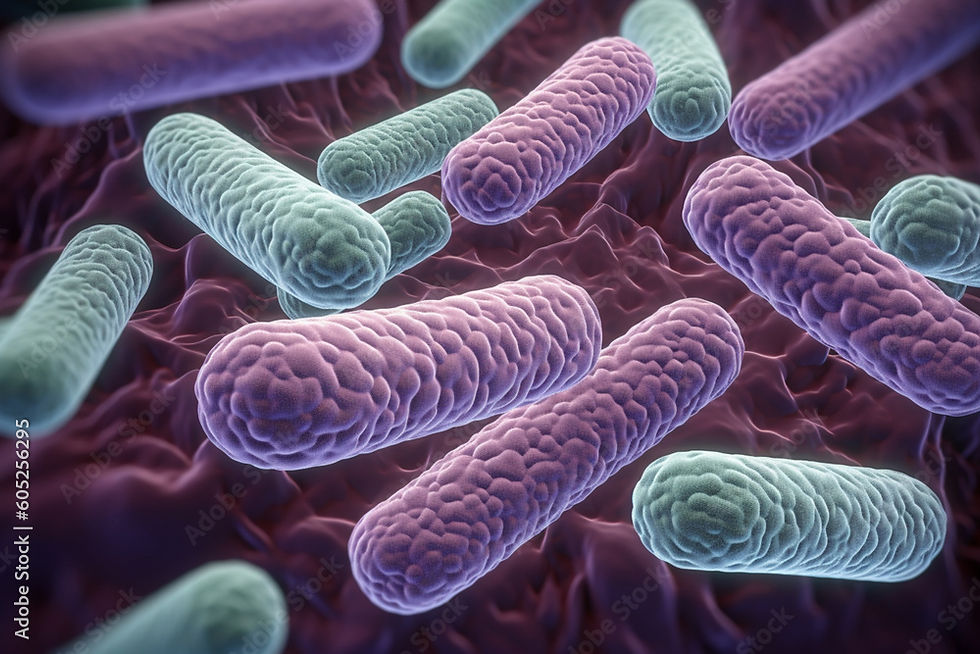Organic milk vs. regular non-organic dairy milk
- NPSelection

- Jun 6, 2022
- 4 min read
Many people wonder what organic milk is and how it differs from regular milk, as many believe that one or more of the following statements for regular milk are true:
1. Regular milk contains antibiotics.
2. Regular milk contains growth hormones.
3. Regular milk comes from cows who were treated less humanely than the ones in organic farms.
4. Regular milk might have lower nutritional value.
Now let’s examine those statements one by one in detail.
1. Regular but also organic milk is safe from antibiotics because it is illegal to sell milk with antibiotics for human consumption in the European Union, UK, Canada, USA and many other places. Testing is performed on numerous occasions for every single batch as inspections are performed and written records are kept. Antibiotics are used sometimes to treat sick cows; however, the milk must be clean from antibiotic residue when placed on the market and this means that treated cows will not supply milk for human consumption until the milk is cleared from antibiotic residue.
2. Naturally occurring hormones are your body's chemical messengers. They travel in your bloodstream to tissues or organs. They work slowly, over time, and affect many different processes like growth, mood, metabolism, reproduction, and others.
Regular milk and organic milk are safe from hormones as the use of synthetic hormones for treating cows and livestock is illegal in the European Union, United Kingdom, Canada, and many other places. In the USA and Australia, the use of synthetic hormones is allowed but recently only 1 in 5 cows in the USA are treated with hormones and the trend is decreasing. The presence of hormones (synthetic or natural occurring) in the treated cows however is extremely low when they exist and additionally, most of that would be destroyed during pasteurisation.
Animals that are NOT treated with hormones organic or regular, however, also deliver their milk or meat with naturally occurring hormones like any living creature and the amount of them is frequently lower than the naturally occurring hormones in some vegetables like beans and seeds, legumes, grains or fruits which have a greater concentration of naturally occurring hormones.
3. Are cows ‘’happier’’ when milk is organic? Unlike free-range chickens and eggs, the cows’ free-ranging is not strictly regulated in the EU and the UK as the focus is on maximising the free-range treatment. In the USA the minimum free-ranging period is 120 days per year. Most farmers send cows outside during grazing season anyway, but, in some countries, this period may be shorter due to the weather as it could actually be anti-welfare if you’re forcing cows outside in bad weather as the cows might not want to go out when too hot, rainy, snow or simply when dark. Technically all organic milk is free-range milk because organic dairy cows must be allowed to graze outside, whenever possible, but regular cows can be free ranged for a longer time when at location with good weather and pastures.
So, the regular and also organic milk giving cows can be both free ranged and follow practices of welfare.
4. Finally, which milk is more nutritious. The quality of the milk depends on various factors, again all of them are irrelevant to the organic requirements. The factors are: diet, breed, and stage of lactation and also country, region, year, and season. The organic and also regular milk nutrients depend on those factors only but NOT on the organic practices or requirements. Any farmer who follows the organic practices will deliver organically certified milk and the nutrients in the milk will be matched to the combination of factors mentioned, so the milk nutrient contents will vary during the year regardless of the organic certification or lack of it. Organic cows need to eat organically certified food. But when the same type of feed is not organically certified and food is the same - the same nutrition level can be expected.
The last thing: which milk is more expensive – organic or regular? Well, organic certified milk will always be more expensive due to the number of people and documented processes involved. Also, frequent paid inspections from third-party organic certifying agencies which document every single step of the cow’s life and milk production. Things like storage of the organic milk at separate places, containers for only organic milk, segregation of the cows for organic milk from others as well as segregation of the organic milk packages from others, require more effort, separate logistics and strict documentation that increase the cost. Additionally, the increased cost puts a requirement for longer shelf life to avoid waste which means that most of the organic milk will be UHT treated which make it more sterile but also due to the caramelisation of the natural sugars change the flavour as it makes it sweet. However not all organic milk is UHT treated and sometimes regular milk is UHT treated as well, especially in the European Union, as this is also irrelevant to the organic certifications and both of the milk types can be UHT treated or not. The processing of the milk influences the shelf life only.
Which type of farm is more frequently inspected? Well, the organic farm will be more frequently inspected, however, nowadays some large farms sometimes produce both - organic and regular milk using different sections of the farm, different cows, different logistic and storage space but frequently the same staff. Regular or organic milk must be tested for the lack of antibiotic residue, hormones and others before being allowed to get into the food chain.
Now that you know the basics, choose your milk for making yogurt and kefir and remember to get organic or not organic whole milk with NO preservatives or additives to get the best results.








































Comments